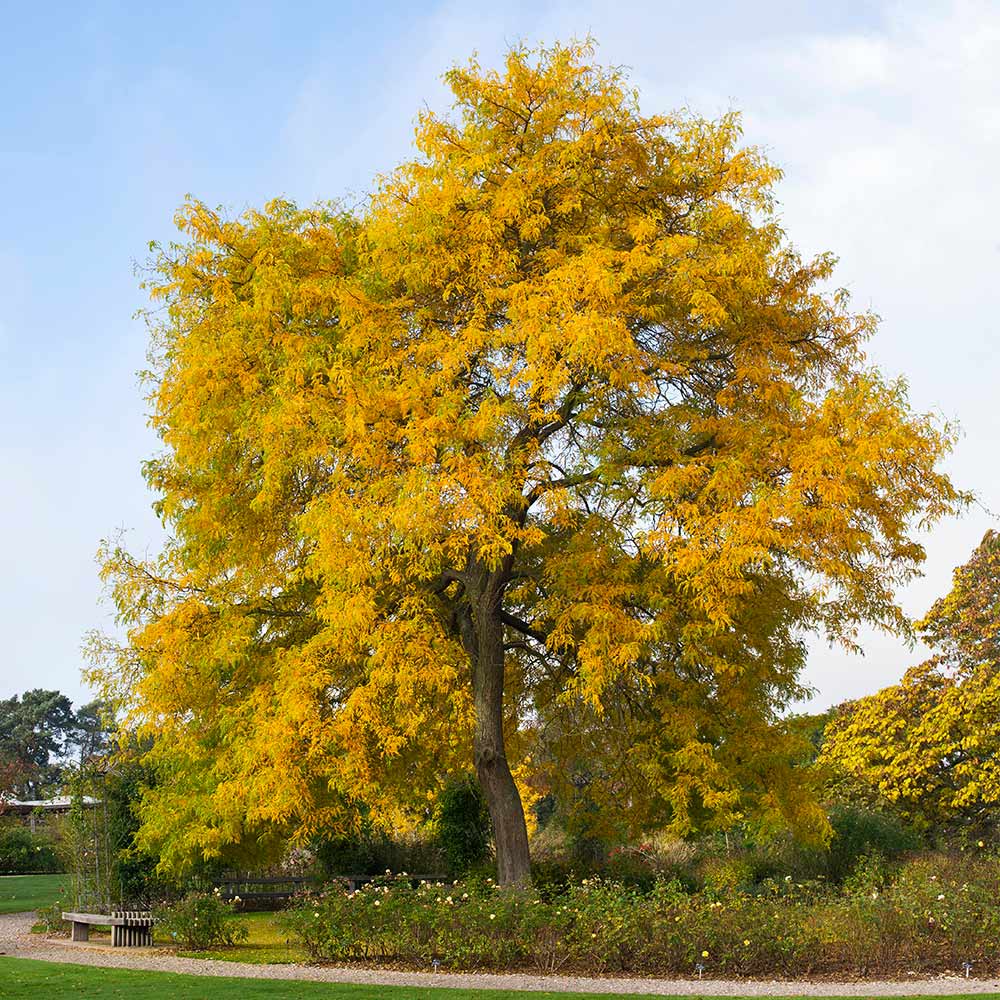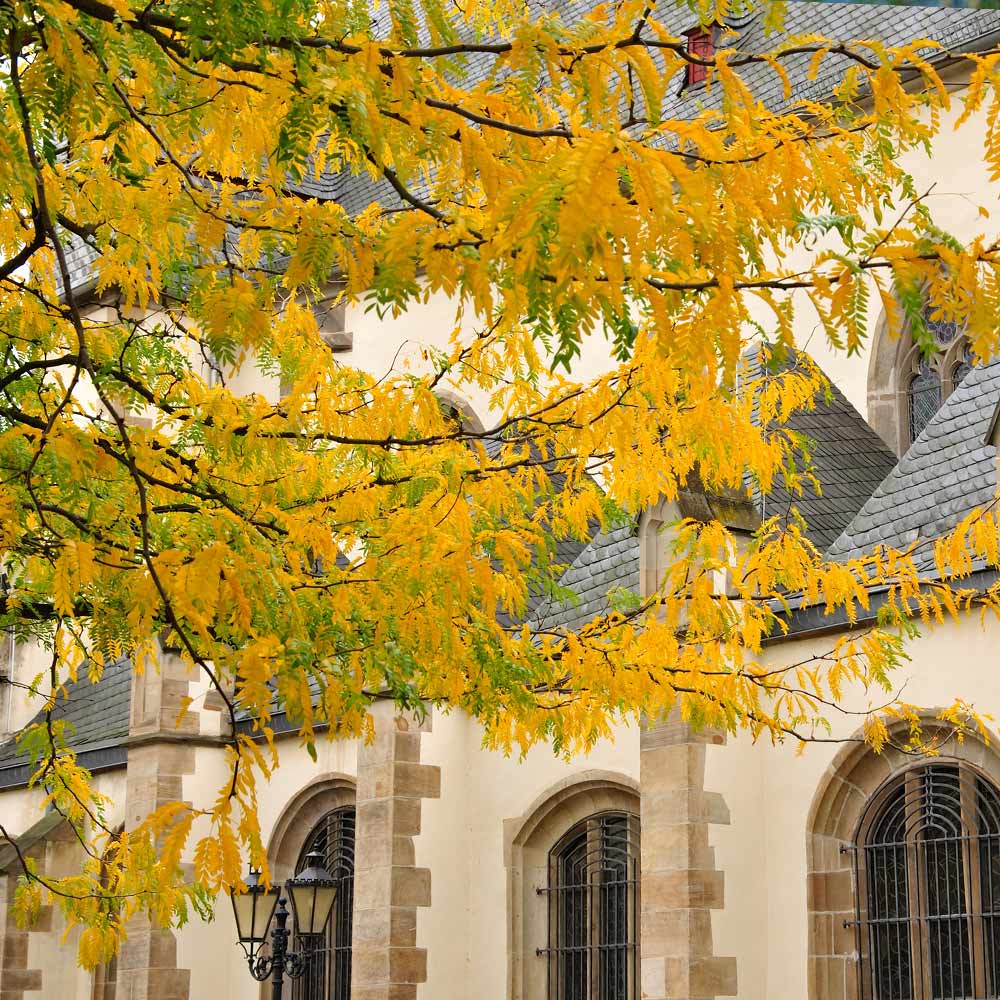Perfect Shade Tree for Your Backyard or Garden
Why Shademaster Honeylocust Trees?
The Shademaster Honeylocust is everything you could want in a shade tree and more. Providing perfect, dappled shade with a classic rounded shape, the Shademaster Honeylocust Tree is highly adaptable, hardy, pest and disease-free, and thornless--very rare for a Honeylocust Tree!
It's synonymous with the classic shade tree. Though shade trees come in many shapes and sizes, there's something nostalgic about the rounded canopy of a Shademaster Honeylocust. Growing to a large mature height, the Shademaster is ideally sized and rounded, ensuring a timeless Americana look you'll love in your lawn.
And small leaves mean no mess to clean up in the fall. Other shade trees have huge foliage that leave a big mess to clean up in autumn. The Shademaster Honeylocust's leaves are small and delicate But though the leaves may be small, they still dazzle during fall. Turning from bright spring green to golden yellow, the transition of colors on these leaves are reminiscent of the nostalgic sights and smells of autumn.
Why Fast-Growing-Trees.com is Better
Thornless and seedless, the Shademaster Honeylocust Tree is effortlessly maintained. And the Honeylocust Tree grows anywhere. In dry or wet soils, polluted air, poor soil conditions, alkaline or acidic soils, clay or sandy soils, cold weather, hot weather, and even salty air - this highly adaptable, durable and hardy Honeylocust thrives in your yard.
But the best part is we've done the hard work ahead of time - planting, growing and nurturing each Shademaster before it arrives to your door. That means you get a healthy root system, top perks and good looks without any effort on your part. You get pest resistance, disease resistance, deer resistance and virtually no upkeep.
If you want a shade tree, the Shademaster Honeylocust is a go-to. Start growing your Shademaster Honeylocust Tree now - order yours today!
Planting & Care
1. Planting: The Shademaster Honeylocust can be planted in any soil or air condition, but it needs to be placed in a spot that receives full sun (6 to 8 hours of sunlight per day).
Plant in a hole twice as wide but just as deep as the root ball. There is no need to amend the soil. You can add mulch under the canopy, but not near the trunk, as the dappled shade will allow plant life to flourish under the canopy.
2. Watering: This tree can tolerate wet or dry conditions. Be sure to water the tree weekly in its young life to ensure proper growth. Generally, checking the soil about 2 inches down and watering when dryness is detected is best.
Other than planting and watering, this tree does not require any pruning, fertilizing or pest or disease management.






Comment